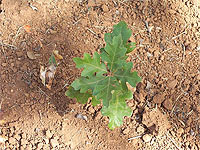Woodland Planting
 When planning the planting of your woodland here's a thought that will make you think twice - most of the trees will probably out live you! In planting a new woodland you'll not only be planting for yourself, family and friends but contributing to the long term health and stability of of native wildlife and habitat.
When planning the planting of your woodland here's a thought that will make you think twice - most of the trees will probably out live you! In planting a new woodland you'll not only be planting for yourself, family and friends but contributing to the long term health and stability of of native wildlife and habitat.
There is a lot more to planting a woodland than digging a hole and putting the tree in green side up. Varieties, supply, management and more all not to be considered to make the most of the blank canvas.
Ground preparation
Good ground preparation
prior to planting is worthwhile to increase the success rate and reduce the need for
maintenance and replacement. Trees require a suitable soil substrate, water, light
and nutrients to grow. Improve soil drainage and
structure and to decrease competition for light, water and nutrients from other
plants.
Ripping can be a useful method for large areas. It breaks up densely compacted soils that are often found in urban areas.
Mounding can reduce weed competition in the first year.A mound of soil is created using a digger and the tree planted into this.
Drain creation can improve the drainage across the site.
Spot spraying with herbicide prior to planting is an alternative to grass cutting. It removes all competition for light, nutrients and water, and allows the tree to be planted more easily into the ground.
Planting
Bare-roots transplants during the dorment winter are the cheapest way to buy your trees. Planning must be done well ahead of time as bare roots trees will need planting as soon as possible after delivery. If they're left standing to long the roots dry out and may never recover.
Keep the trees in their bags to protect the roots from being dried by the wind until they're ready to be lowered into their new home. Plant each tree to the same depth as its nursery soil. It is important to recheck the trees after planting and firm up any which have fallen over.
Place a tree shelter and cane next to each sapling to protect it in the early years. The first five years are critical to establishing the trees. After this time the canopy will shade the ground reducing competition from other plants and the tree stems will have become less susceptible to pest damage.